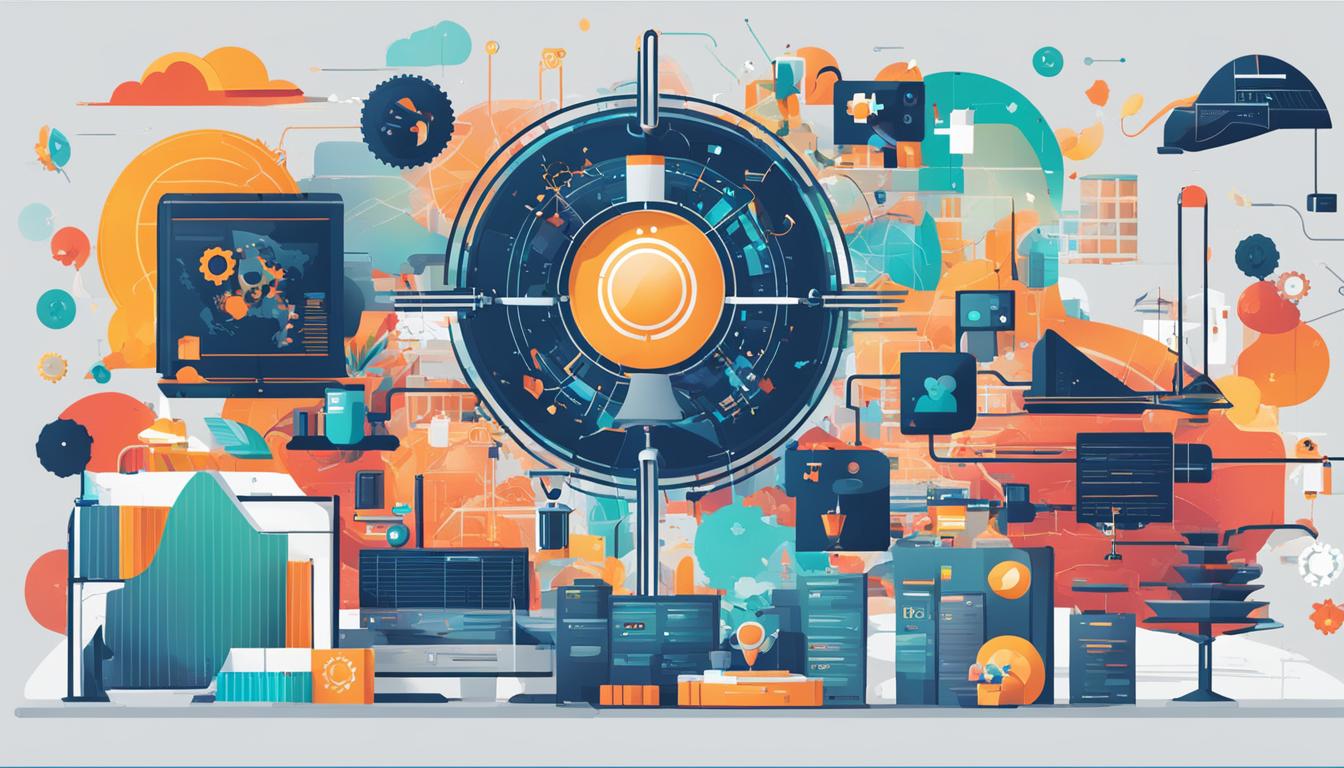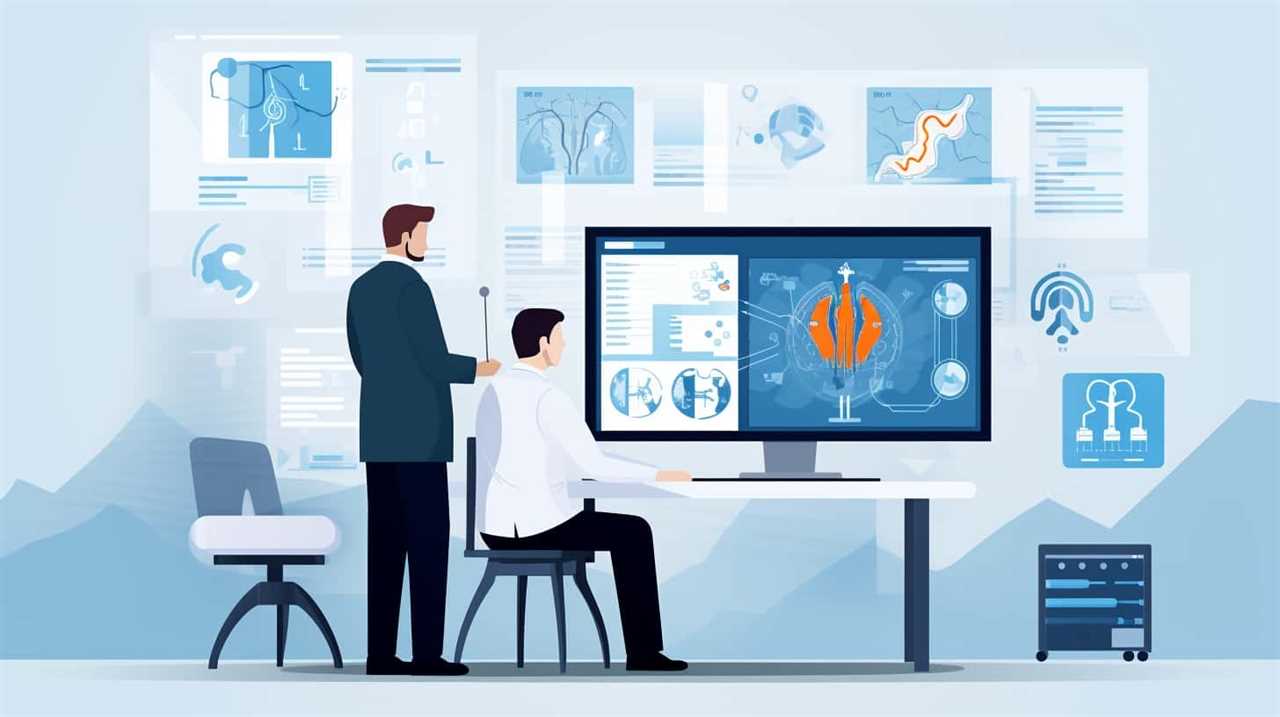As a unified society, we are rapidly progressing in the realm of technological advancements, and the global competition for AI has reached unprecedented levels thanks to the groundbreaking achievements of OpenAI.
These developments, like the stateful API and cost reduction measures, have not only revolutionized AI accessibility but also fueled predictions of its future impact.
OpenAI’s ACE framework and progress in cognitive architectures have propelled us towards a new era of AI-powered intelligence.
Join us as we explore how these breakthroughs are intensifying the global AI race and shaping our collective liberation.

Key Takeaways
- OpenAI’s breakthroughs, such as the stateful API and cost reduction measures, are making AI more accessible and affordable, intensifying the global AI race.
- The ACE framework is advancing the field of AI by focusing on creating cognitive architectures and autonomous agents with advanced reasoning capabilities and natural language understanding.
- There is increasing competition in AI research and development, with other countries actively investing in the field.
- The potential applications and impact of AI are expected to be significant, including advancements in healthcare, finance, transportation, and education, as well as the democratization of AI, mimicking human intelligence, and enhancing the capabilities of AI systems.
AI Developments and Global Competition
As global competition in AI intensifies, it’s important to examine the latest developments in this field. We’re witnessing an exciting era of innovation and progress, where advancements in Artificial Intelligence are shaping the future of technology.
OpenAI’s recent breakthroughs have been instrumental in pushing the boundaries of what’s possible. Their stateful API and cost reduction strategies are paving the way for widespread adoption and accessibility.
Furthermore, the ACE framework, along with its progress in cognitive architectures and autonomous agents, is fueling curiosity and interest among researchers.
However, it isn’t just OpenAI that’s making waves in this race. Countries like Russia are also striving to establish their dominance in AI development.

With the global AI race heating up, it’s imperative for us to stay informed and embrace the liberating opportunities that this technology brings.
OpenAI’s New Developments
OpenAI has made significant strides in our research and development, introducing new breakthroughs that have propelled the field of Artificial Intelligence forward. Our stateful API has revolutionized the way AI models are used, allowing for more efficient and cost-effective deployments.
By reducing costs, we’re making AI more accessible to a wider audience, empowering individuals and organizations to harness its potential.
Additionally, our ACE framework has made progress in advancing cognitive architectures and autonomous agents, bringing us closer to developing AI systems that can reason, learn, and adapt like humans.

These developments are crucial in our mission to ensure that AI benefits all of humanity.
We continue to push the boundaries of AI, creating technologies that liberate and empower individuals in this rapidly evolving global AI race.
Openai’s Stateful API and Cost Reduction
Our stateful API and cost reduction measures have transformed the way AI models are deployed, making them more efficient and affordable for a wider audience. We understand the importance of accessibility and have taken steps to ensure that AI technology is not limited to a select few. By offering a stateful API, users can now store and retrieve information, allowing for more interactive and dynamic applications. Additionally, our cost reduction measures have made AI more affordable, breaking down barriers and empowering individuals and businesses to leverage the power of artificial intelligence. As shown in the table below, the combination of our stateful API and cost reduction efforts has led to increased efficiency, reduced expenses, and expanded opportunities for innovation.
| Benefit | Stateful API | Cost Reduction |
|---|---|---|
| Increased Efficiency | Yes | Yes |
| Reduced Expenses | Yes | Yes |
| Expanded Opportunities for Innovation | Yes | Yes |
Decreasing Costs and Future Predictions
By decreasing costs and making AI more affordable, OpenAI’s breakthroughs have paved the way for a future where widespread adoption and innovation in artificial intelligence become a reality.

This means that AI will no longer be limited to a select few, but will be accessible to individuals and organizations of all sizes. With lower costs, more people can harness the power of AI to solve complex problems, improve efficiency, and drive growth.
This democratization of AI will unleash a wave of creativity and innovation, as individuals and teams from diverse backgrounds can contribute their unique perspectives and ideas.
As AI becomes more affordable, we can expect to see advancements in various fields, such as healthcare, finance, transportation, and education.
This future holds immense potential for liberation and progress, empowering individuals and societies to thrive in the digital age.

The ACE Framework and Its Progress
We frequently monitor the progress of the ACE framework as it continues to advance the field of artificial intelligence. The ACE framework, which stands for "Autonomous Cognitive Engine," is an innovative approach to developing AI systems that possess human-like cognitive abilities. OpenAI’s research and development efforts in this area have yielded promising results, pushing the boundaries of what AI can achieve. The ACE framework focuses on creating cognitive architectures and autonomous agents that can understand, reason, and learn in a manner similar to human intelligence. To illustrate its progress, here is a table showcasing some key milestones:
| Milestone | Description |
|---|---|
| Advanced reasoning capabilities | AI systems that can solve complex problems and make logical deductions |
| Natural language understanding | AI systems that can comprehend and generate human-like language |
| Contextual learning | AI systems that can adapt and learn from new situations and environments |
| Ethical decision-making | AI systems that can make ethical judgments and consider moral implications |
| Autonomous problem-solving abilities | AI systems that can independently identify and solve problems |
The ACE framework’s advancements open up new possibilities and applications for AI, empowering individuals and society as a whole.
Interest in Cognitive Architectures and Autonomous Agents
The increasing advancements in the ACE framework have sparked a growing interest in cognitive architectures and autonomous agents within the global AI community. We, as a community that desires liberation, are intrigued by the potential of cognitive architectures to mimic human intelligence and enhance the capabilities of AI systems.
The ACE framework provides a foundation for developing cognitive architectures that can reason, learn, and adapt like humans. This opens up possibilities for creating autonomous agents that can perform complex tasks, make decisions, and interact with their environments in a more intelligent and intuitive manner.

The interest in cognitive architectures and autonomous agents signifies our collective pursuit of creating AI systems that can match or even surpass human cognitive abilities. As we explore the possibilities and challenges in this field, we strive to ensure that these advancements benefit humanity as a whole.
Russia’s Struggle With AI Development
Despite its strong technological capabilities, Russia has faced significant challenges in the development of artificial intelligence. These challenges include limited investment, brain drain, lack of collaboration, and ethical concerns.
Limited investment: Russia has struggled to attract the necessary investment to fund AI research and development. This has hindered the country’s ability to compete with global leaders in the field.
Brain drain: Many talented Russian AI researchers have emigrated to other countries, seeking better opportunities and resources. This brain drain has further weakened Russia’s AI development efforts.

Lack of collaboration: The lack of collaboration between academia, industry, and government has hindered progress in AI development. Without a coordinated effort, Russia has struggled to leverage its technological capabilities effectively.
Ethical concerns: Russia’s AI development has also faced criticism for its lack of transparency and potential for misuse. This has raised ethical concerns among both domestic and international communities.
Global AI Race
The competition in the global AI race is intensifying with OpenAI’s recent breakthroughs. As an audience that desires liberation, we’re witnessing significant advancements that have the potential to shape the future of AI technology.
OpenAI’s stateful API and cost reduction are paving the way for more accessible and affordable AI solutions. Decreasing costs not only make AI more accessible to individuals and businesses but also foster innovation and competition.

The progress made with the ACE framework and the growing interest in cognitive architectures and autonomous agents further underscore the rapid pace of development.
While Russia struggles with AI development, other countries are actively investing in AI research and development, fueling the global AI race.
OpenAI’s breakthroughs are pushing the boundaries of what’s possible, and it’s imperative for nations and organizations to stay ahead in this race for the benefit of all.
Breakthroughs in Science and Technology
Our recent advancements in science and technology have yielded remarkable breakthroughs in the field of AI. These breakthroughs have the potential to liberate humanity from various limitations and challenges. Here are four significant advancements:

-
Breakthrough Research on Senescent Cells: Scientists have made significant progress in understanding senescent cells, which are associated with aging and age-related diseases. AI algorithms are being developed to target and eliminate these cells, potentially extending human lifespan and improving health.
-
AI Breakthroughs in Animal Communication: Researchers have made strides in developing AI systems that can interpret and communicate with animals. This breakthrough has the potential to deepen our understanding of different species, promote conservation efforts, and enhance our relationship with the natural world.
-
CTIC Cells: Breakthroughs in AI have led to the discovery of CTIC cells, which possess the ability to repair damaged tissues and organs. This advancement holds promise for revolutionizing regenerative medicine and improving the quality of life for individuals suffering from various conditions.
-
OpenAI Chips: OpenAI’s hardware development team has made significant advancements in designing specialized chips for AI computations. These chips are more energy-efficient and can accelerate AI training and inference processes, paving the way for faster and more advanced AI applications.

These breakthroughs in science and technology not only expand our knowledge but also offer opportunities for personal and societal liberation, pushing the boundaries of what’s possible in the field of AI.
Breakthrough Research on Senescent Cells
Moving forward from our discussion on breakthroughs in science and technology, let’s delve into the fascinating realm of breakthrough research on senescent cells.
Senescent cells are cells that have entered a state of irreversible growth arrest, preventing them from functioning properly. This research holds immense promise in the field of aging and longevity. Scientists are studying ways to selectively eliminate these senescent cells, as they’ve been implicated in various age-related diseases. By targeting and removing these cells, researchers hope to improve overall health and extend human lifespan.
Excitingly, recent breakthroughs have shown that senescent cells can be successfully cleared from tissues, leading to rejuvenation and improved tissue function. This research offers hope for a future where aging isn’t synonymous with decline, but rather a stage of life filled with vitality and liberation.

AI Breakthroughs in Animal Communication
AI breakthroughs have revolutionized animal communication. These advancements have opened up new possibilities for understanding and interacting with the animal kingdom. Here are some key developments in this field:
-
Translation technology: AI has made significant progress in translating animal vocalizations and body language into human language. This allows us to better understand their needs, emotions, and intentions.
-
Improved communication devices: AI has enabled the development of advanced communication devices that can bridge the gap between humans and animals. These devices facilitate two-way communication, allowing animals to express themselves and humans to respond effectively.
-
Enhanced research capabilities: AI-powered tools have greatly enhanced our ability to study animal communication patterns. Machine learning algorithms can analyze large amounts of data and identify complex communication patterns that were previously difficult to detect.

-
Conservation efforts: AI is playing a crucial role in conservation by helping us understand endangered species’ communication patterns. This understanding enables us to develop targeted conservation strategies and protect these species from extinction.
With these breakthroughs, we’re moving closer to a world where humans and animals can communicate more effectively, leading to improved welfare and a deeper appreciation for the natural world.
CTIC Cells
CTIC cells have emerged as a groundbreaking advancement in the field of AI research. These cells, also known as Cognitive and Transcendental Intelligence Cells, hold immense potential in liberating our understanding of artificial intelligence.
With CTIC cells, we can delve deeper into the complexities of cognition and consciousness, enabling AI systems to exhibit higher levels of awareness and understanding. By incorporating these cells into AI architectures, we’re paving the way for machines that can think, reason, and make decisions with a level of sophistication previously unseen.

CTIC cells have the power to bring us closer to the realization of autonomous agents that possess human-like cognitive abilities, opening up new possibilities in fields such as healthcare, education, and robotics.
The exploration of CTIC cells marks a significant step forward in our quest for AI liberation.
Job Displacement and Automation
With the rise of artificial intelligence, concerns regarding job displacement and automation have become increasingly prevalent. As we dive deeper into the world of AI, it’s important to address the potential impacts it may have on employment. Here are four key points to consider:
-
Increased Efficiency: AI has the potential to automate repetitive tasks, allowing humans to focus on more complex and creative work.

-
Job Transformation: While some jobs may be replaced, new roles will emerge that require human skills such as critical thinking, problem-solving, and emotional intelligence.
-
Reskilling Opportunities: As AI takes over certain tasks, there will be a need for reskilling programs to equip workers with the skills needed for the jobs of the future.
-
Ethical Considerations: It’s crucial to ensure that AI development aligns with ethical principles, avoiding bias and discrimination in decision-making processes.
Job Destruction Due to AI
As we delve further into the potential impacts of artificial intelligence, concerns regarding job destruction due to its implementation become increasingly significant. While AI has the potential to revolutionize industries and improve efficiency, it also poses a threat to human employment.

Many fear that automation will lead to widespread job losses, leaving individuals unemployed and struggling to find new opportunities. This concern is especially pertinent for those in industries that are highly susceptible to automation, such as manufacturing and customer service.
However, it’s important to approach this issue with a mindset of liberation. Rather than viewing AI as a threat, we should see it as an opportunity to redefine work and focus on tasks that require human creativity, critical thinking, and empathy.
Frequently Asked Questions
What Are Some of the Challenges Faced by Russia in AI Development?
Some challenges faced by Russia in AI development include limited access to resources, lack of funding and investment, brain drain, and competition from other countries with more advanced AI ecosystems.
Can You Provide Examples of Breakthrough Research on Senescent Cells?
Sure! Breakthrough research on senescent cells includes identifying their role in aging and developing interventions to remove or rejuvenate them. This research has the potential to revolutionize our understanding of aging and improve human health and longevity.

How Have AI Breakthroughs Impacted Animal Communication?
AI breakthroughs have greatly impacted animal communication. We have witnessed advancements in understanding animal language and behavior, enabling us to bridge the communication gap and develop new ways to interact with and learn from animals.
What Is the Significance of CTIC Cells in the Field of Science and Technology?
CTIC cells are significant in science and technology as they have the potential to revolutionize medical treatments. Their unique ability to target senescent cells could lead to breakthroughs in anti-aging research and the development of new therapies.
How Does Job Destruction Due to AI Affect the Overall Economy?
Job destruction due to AI can have a significant impact on the overall economy. As AI automates tasks, it can lead to unemployment and income disparities. However, it also presents opportunities for new jobs and industries to emerge.
Conclusion
In the race for AI supremacy, OpenAI’s breakthroughs have ignited a global competition that’s reshaping industries and challenging job security.

With their stateful API, cost reduction measures, and advancements in cognitive architectures, OpenAI is revolutionizing the accessibility and affordability of AI technology.
As we navigate this new era of AI-powered intelligence, the stakes are high and the possibilities are endless.
We must keep our eyes wide open and stay ahead of the curve, for the future is being shaped by the relentless pursuit of technological breakthroughs.











